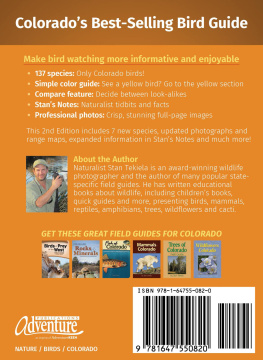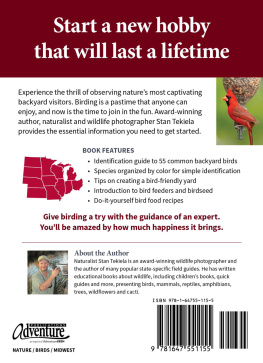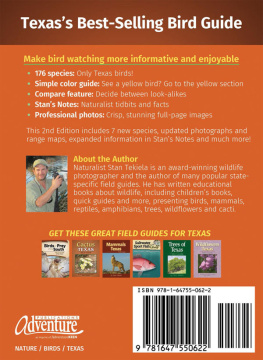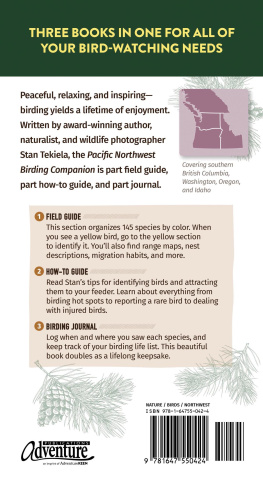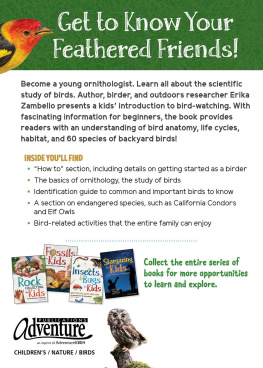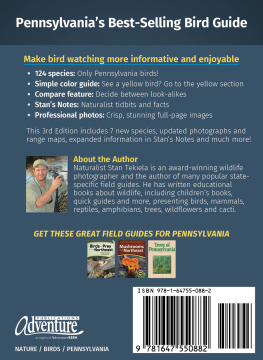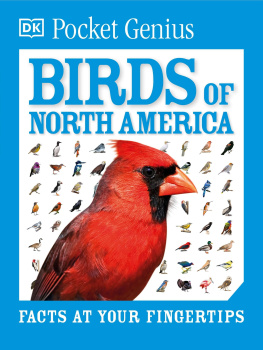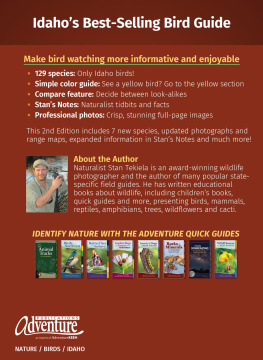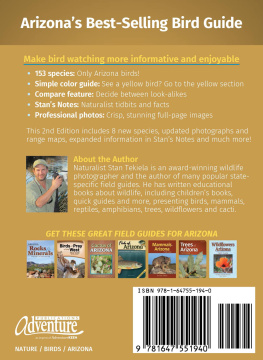1001 Secrets
Every Birder Should Know
By Sharon Birdchick Stiteler
Foreword by Bill Oddie

2013 by Sharon Stiteler
Published by Running Press,
A Member of the Perseus Books Group
All rights reserved under the Pan-American and International Copyright Conventions
This book may not be reproduced in whole or in part, in any form or by any means, electronic or mechanical, including photocopying, recording, or by any information storage and retrieval system now known or hereafter invented, without written permission from the publisher.
A Hollan Publishing, Inc. Concept
Books published by Running Press are available at special discounts for bulk purchases in the United States by corporations, institutions, and other organizations. For more information, please contact the Special Markets Department at the Perseus Books Group, 2300 Chestnut Street, Suite 200, Philadelphia, PA 19103, or call (800) 810-4145, ext. 5000, or e-mail .
ISBN 978-0-7624-4734-3
Library of Congress Control Number: 2012954930
E-book ISBN 978-0-7624-4832-6
987654321
Digit on the right indicates the number of this printing
Cover and interior design by Jason Kayser
Edited by Geoffrey Stone
Typography: Avenir, Chronicle, and Giza
Running Press Book Publishers
2300 Chestnut Street
Philadelphia, PA 19103-4371
Visit us on the web!
www.runningpress.com
For Bill. Tolerant, tolerant Bill.
Contents

downy woodpecker
There is never enough thanks to give to my non-birding husband, Bill Stiteler. Hes put up with my long trips, my babbling about brown birds, bought me so many books and even when my love of birds can appear to trump our relationship or I come home with a new parasite, he is still with me. And he even maintains my birding website. Thank you, Bill, I do love you.
A big thank-you to my editor, Geoffrey Stone, who had to deal with my crazy bird survey and bird festival schedule over deadlines. I am a firm believer that a writer is only as good as her editor and this wouldnt be nearly as fun to read without him.
Another huge thank-you needs to go out to Holly Schmidt, who read my blog and got this whole book rolling. Thank you, Holly.
A special thank-you to my agent, Merrilee Heifetz, for sticking with me as an author, even when I drive her nuts.
Other thanks to Brie Anderson, Raul Arias de Para, Tim Appleton, Paul Baicich, Matt Bango, Tracy Bernhardt, Carlos Bethancourt, Trace Beualieu, Mike Bergin, Edward Brinkley, Dougal Q. BunnyPants, Amber Burnette, Dean Capuano, Evan Carrigan, Christopher Ciccone, Richard Crossley, Alex Downie, Rob Drieslein, Dan Dressler, Michele Dupraw, Richard Dupraw, Lang Elliot, Steve Endres, Laura Erickson, Tony Ernst, Roger Everhart, Corey Finger, Ted Floyd, Jason Frederick, Greg Gard, Jeff Gordon, Liz Gordon, Terri Graves, Neil Gaiman, Lorraine Garland, Catherine Hamilton, Carrol Henderson, Steve Holzman, Amy Hooper, Ari Hoptman, Anthony Hertzel, Tammy Holmer, Alvaro Jaramillo, Peter Jones, Steve Kaufer, Kenn Kaufman, Kim Kaufman, Maureen Keefe, T. J. Kudalis, Paul Johnsgard, Randall Kinkor, Nikki Koval, Mark Martell, Jonathan Meyrav, Kirk Mona, Linda Munson, Craig Nash, Hans Newstrom, Mark Newstrom, Frank Nicoletti, Bill Oddie, Jay Ovsiovitch, Peter Perrino, Richard Phillips, Sue Plankis, LeAnn Plinske, Ron Plinske, Ian Punnett, Curt Rawn, Mark Robinson, Larry Sirvio, Lynne Schoenborne, Paul Sedler, Susan Stam, Bill Stiteler Sr. Judy Stiteler, Jenna Strahan-Ouren, Joseph Studnicka, Frank Taylor, Bill Thompson III, Nathan Swick, Clay Taylor, Brian Valentine, Nicole Wagner, Julie Waters, Judy Watson, Susy Woodson, and Julie Zickefoose.
And a very, very special thank-you to Dr. and Mrs. Paul and Judy Strange, you know what you did and who knows where I would be without that. Not a day goes by when I dont think about how fortunate I am because of you.
Oh, yeah and every bird on the planet, thank you to you guys too. You rock. Well, except maybe for that one pelican who threw up on me and gave me pouch lice. You didnt rock nearly as much as the other birds.
Proper grown-up, serious, scientific ornithologists are mainly interested in and love to talk and write about BEHAVIOUR. They are generally not that bothered about identifying birds, keeping lists of how many they have seen, or even feeding them. They rarely look at a bird and say how pretty or listen to bird song and say how lovely. They love statistics, especially if they are illustrated by graphs, tables, numbers, and calculations about population dynamics. They are not so much bird watchers as bird study-ers, less concerned with what birds look or sound like, than with what they are doing. And whatever they are doing it is called behaviour. Even if it isnt.
I have spent the last twenty years of my life making wildlife (particularly birds) programs for the BBC, and I have concluded that a large percentage of what a scientist may regard as interesting behaviour is in facthow can I put this?bloody boring. A lively commentaryprovided by myselfmay make it slightly less boring, but a dissertation by an ornithologist will often render it unbearable andmore to the pointunwatchable. Unwatchable does not make good telly.
Throughout my career I have always been guided by this principle: even though I may wish to impart some knowledge or promote some conservation cause, first and foremost I have to make an entertaining show. Whether it is a comedy (Ive done that), a panel game (Ive done that too), a drama (Ive done one), or a documentary about genealogy, archeology, or dinosaurs (Ive done em all), the aim is the sameto entertain. The ingredients also are the same: drama, humour, tragedy, beauty, spectacle, excitement, witty and articulate words, pleasing or characterful voices, and appropriate music.

red-eyed vireo
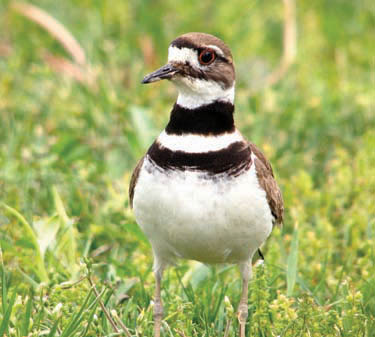
killdeer
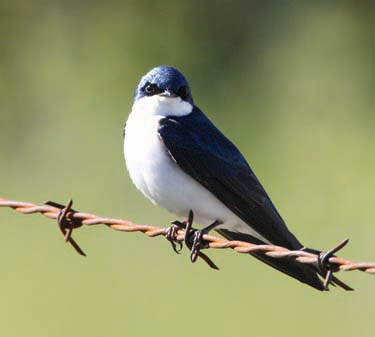
tree swallow
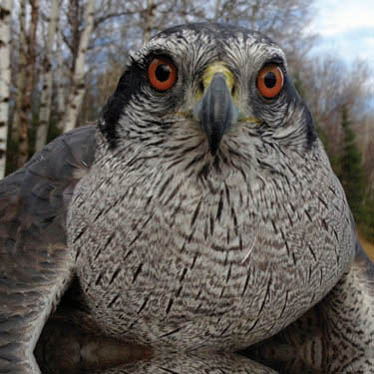
northern goshawk
So, no place for behaviour!? Oh there certainly is, but let us be honest, when a wildlife film cameraman tells you excitedly that he has got some great behaviour, what he means is bad behaviour. Birds behaving badly! Thats what we want to see. Chasing each other, attacking each other, eating one another. Cameramen will kill for a kill or better yet for birds behaving naughtily: flirting, displaying, mounting, doing it. Doing it again. And again. And again. Seriously misbehaving, being unfaithful, promiscuous, and in a few cases downright weird.
Next page

